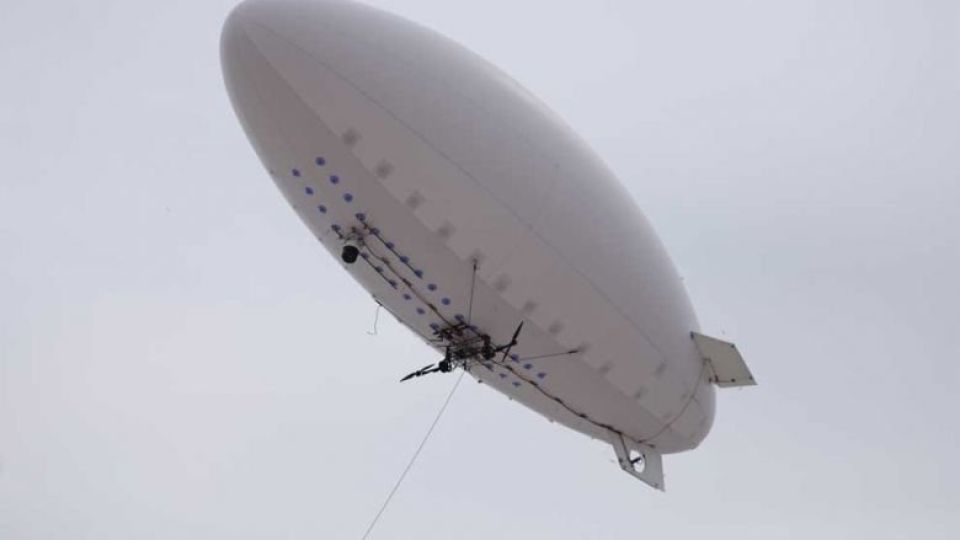June 7, 2023
PHNOM PENH – The innovation and excitement that has surrounded the Kingdom’s successful hosting of the 32nd SEA Games and 12th ASEAN Para Games does not end with the Olympic-standard swimming complex, or the high tech running track of the brand new Morodok Techo National Stadium.
Soaring high above the opening and closing ceremonies of the SEA Games was an ingenious addition to the safety and security of the events – a locally designed and built surveillance balloon, or airship.
A team of talented Cambodian youths from the Union of Youth Federations of Cambodia (UYFC) in Svay Rieng province successfully developed the dirigible aircraft. The creation of the impressive device was spearheaded by project leader Hem Sothirith.
“We hope to utilise the airship we have developed during the closing ceremony of the 12th ASEAN Para Games, too. Obviously, as a lighter-than-air craft, it is susceptible to extreme weather conditions, so we were unable to deploy it at the opening ceremony. We also plan to deploy it at future events,” he told The Post.
The airship is equipped with a 360-degree rotating camera capable of zooming in up to 500m. The camera captures high-resolution pictures and videos, which are then transmitted to a Command Centre located below for real-time monitoring of the area below. With the ability to fly to an altitude of 400-500m, the craft can effectively survey large areas remotely.
The airship, controlled through a remote system, boasts an impressive flight time of approximately 3-4 hours before requiring recharging. Prior to each launch, the team must add hydrogen to enable the balloon’s buoyancy.
The project team, consisting of both professionals and enthusiastic students, worked diligently to complete the airship.
Sreng Sotheanith, a private sector employee, serves as the deputy chief of the team. Hou Phengleap and Ol Makara are also working full time, while team members Chheng Sovannarith and Heng Panharanit are first year university students. Lay Sovisal, Lim Chanboth and Kheng Sopheareach, who are still in high school, make up the team.
“We are all UYFC youth volunteers from Svay Rieng province,” said Sothirith.
He explained that the aircraft incorporates an IP Camera, a powerful motor for controlling its direction, two microcontrollers for handling the control system, two batteries for power supply, and various additional electronic components.

Hem Sothirith (left) addresses his team as they prepare to launch their aircraft. PHOTO SUPPLIED
During the course of the 45 day project, the team encountered several obstacles that tested their determination and resourcefulness.
Time constraints were a significant challenge due to their limited experience in such an endeavour, and sourcing certain components locally proved difficult, necessitating international searches for the required parts.
“Another major obstacle we faced was redesigning the airship’s parts. The components posed difficulties in terms of fitting them properly, requiring extensive adaptation and a considerable amount of time to devise suitable solutions,” said Sothirith.
“Furthermore, the hydrogen aspect posed its own set of challenges. The craft requires the addition of hydrogen before each launch, and we had to produce the hydrogen ourselves,” he added.
The team also encountered challenges during the initial testing stages of the Airship. Managing flight control was a primary issue, given the balloon’s large and lightweight structure.
“Additionally, stabilising the camera system posed difficulties due to the absence of an inherent stabilisation system,” Sothirith explained. “However, our subsequent research enabled up to address these concerns.”
On behalf of the team, he expressed his gratitude to the UYFC leadership, particularly the president of the Svay Rieng branch, for their unwavering support.
He acknowledged that the project serves as a remarkable platform to showcase the talents and capabilities of young Cambodians in various fields.
“We are proud to present our work as a testament to the efforts and dedication of the Khmer people to a successful hosting of the 32nd SEA Games and 12th ASEAN Para Games,” he added.


